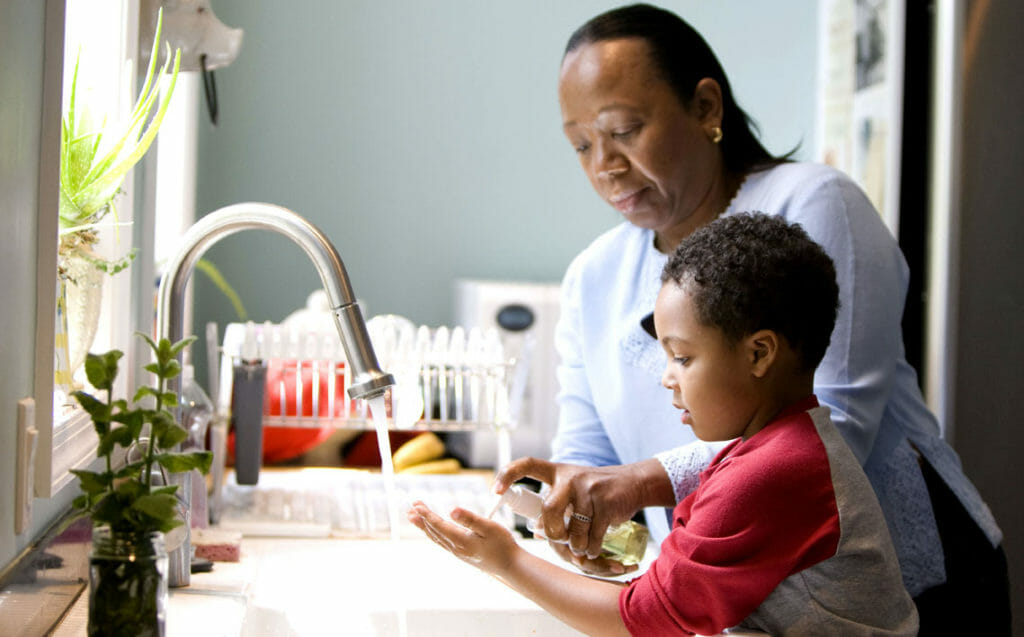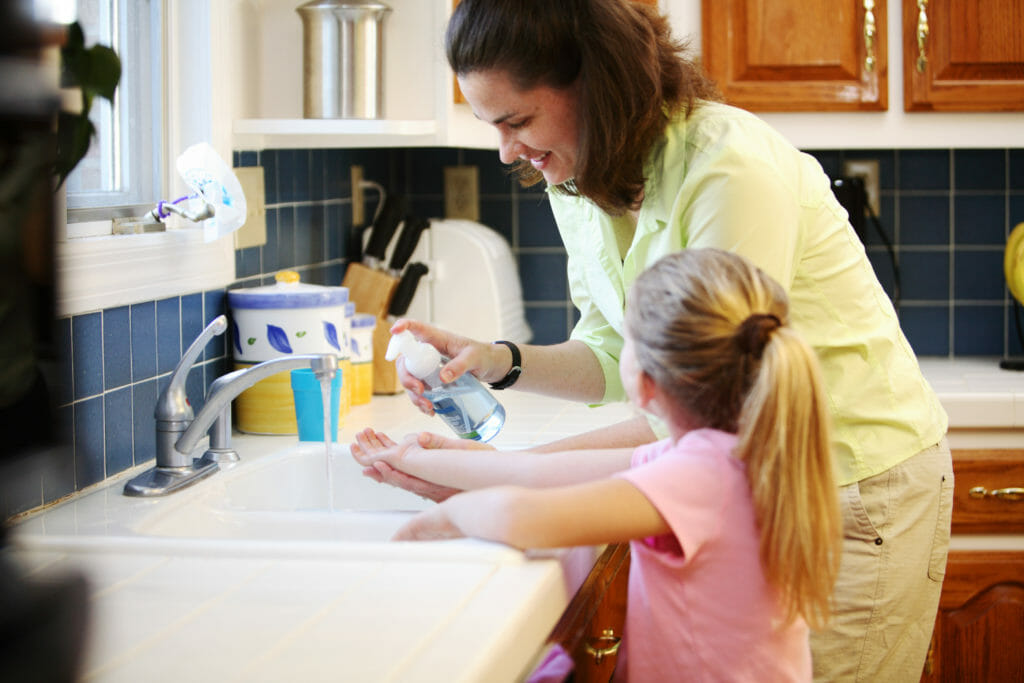By Shelley Feist, Executive Director, Partnership for Food Safety Education
In recent research released by the USDA Food Safety and Inspection Service (Year 3 findings), 53% of respondents to a national survey reported having someone at higher risk of foodborne illness in their household.
Someone at higher risk could be a young child, an elderly person, a pregnant family member, or a loved one with a chronic underlying health condition, like diabetes.
What might be different about a household where one or more people in the home are immune-compromised or otherwise at risk for foodborne illness?

Ideally, food safety would be top-of-mind for everyone in the household. Ideally, in that household, consistency in safe food handling and proper hand hygiene would be a shared priority.
Recently I became aware of unpublished survey results from a health organization showing that, even after experiencing a gastrointestinal illness, a large majority of people surveyed said they would not do anything differently in handling food.
People who work in food safety education are constantly working to learn more about the blocks and the motivators to home safe food handling practices. Do those of us who work in consumer education have something to learn from what’s going on in the food industry around developing a strong internal “food safety culture”?
The FDA’s New Era of Smarter Food Safety says that “a strong food safety culture is a prerequisite to effective food safety management,” and that commitments are needed to “foster, support, and strengthen food safety culture on farms, in food facilities and in homes.”
If you or someone in your home is at increased risk for serious foodborne illness, it’s worth taking time with your loved ones to define what food safety means for your household.
Foster food safety at home
- Have a family discussion about values around day-to-day practices for hand hygiene, safe food handling and surface cleaning. What does everyone agree to? Can you make sure everyone plays a role?
- What does it mean to be immunocompromised in your household? Is everyone in the home considering the potential impacts if a family member were to get a foodborne illness?
Support food safety at home
- Post in your kitchen the Core Four Fight BAC!® food safety practices.
- Agee that all household members always wash their hands before sitting down to eat a meal.
- Consider the risks of some foods that might be favorites in household. Could you modify some family food favorites in the interest of reducing risk?
Strengthen food safety at home
- Use safe recipes. Ask your favorite recipe providers to adopt the Safe Recipe Style Guide.
- Consistently use a digital food thermometer for safety and quality.
- Always use soap and running water to wash hands.
- Make kitchen surface cleaning and sanitizing a priority.
- If you share your kitchen with pets, be sure to separate pet feeding areas from surfaces where you prepare family meals.
Your at-home food safety culture is to be aware and be prepared. Reducing risk of foodborne illness at home is fundamental to your family’s enjoyment of delicious, healthy foods.
UPCOMING PRESENTATION
Federal Leaders Talk about Food Safety and the Health of Americans
Wednesday, March 10
12:15 to 1:15 p.m. EST
The idea of food safety culture throughout our food chain — including at the family dinner table — will be explored by leading food safety experts from the U.S. federal agencies and leading universities. Join us for a panel of federal leaders to talk about food safety and the health of Americans.
Frank Yiannas, Deputy Commissioner for Food Policy and Response, U.S. Food and Drug Administration, will address food safety culture and the “New Era of Smarter Food Safety.”
ABOUT THE CONFERENCE
The 2021 Consumer Food Safety Education Virtual Conference, March 9-12, 2021, sponsored by the non-profit Partnership for Food Safety Education, is the only conference in the U.S. dedicated to consumer food safety education. For more conference information and to register, please visit fightbac.org/virtual.













